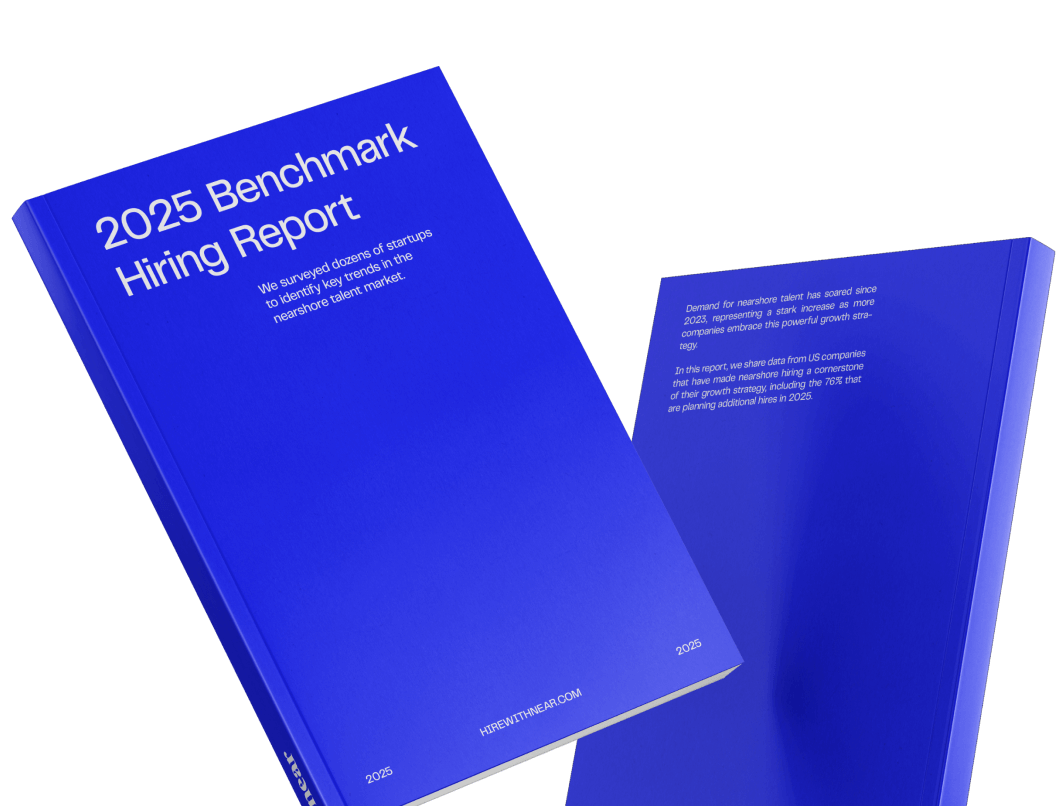Remote work has become increasingly popular in recent years, and it is more important than ever for businesses to find the right talent for their virtual teams. Two regions that have emerged as leading destinations for skilled remote workers are Latin America (LatAm) and the Philippines.
In this article, we will dive into the nuances of hiring remote talent in LatAm vs. the Philippines and explore how each region can be a good fit for specific company cultures and project types. By the end of this article, you will understand which region may be the best choice for your business’s remote hiring.
Recruiting Remote Talent in LatAm vs. the Philippines: Similarities and Differences
Though LatAm and the Philippines share some similarities as popular choices for hiring remote professionals, they are also unique talent markets with significant differences.
Skills and education
LatAm and the Philippines have a large pool of well-educated professionals who possess a diverse range of skills. As an individual country, the Philippines has a smaller population, with an estimated 118.3 million people, while LatAm stands at around 669 million.
Both regions boast high literacy rates, with the Philippines reporting a rate of 99.27% and LatAm and the Caribbean averaging around 94.6%. Their workers’ educational backgrounds are similar, with many professionals holding degrees in engineering, computer science, business administration, and other relevant fields.
The Philippines is known for its strong IT outsourcing industry, with skilled professionals in:
- Software development
- Web design
- Digital marketing
LatAm has also seen significant growth in its tech sector and is home to many talented remote developers and designers.
One major skill difference between the two regions is language proficiency. While English is widely spoken and understood in the Philippines due to its historical ties with the US, there may be variations in accent or fluency depending on the individual.
In LatAm, English proficiency is less widespread, but top remote professionals still tend to have excellent written and verbal skills.
Culture and time zone differences
Both LatAm and the Philippines have a strong work ethic, with professionals known for their dedication and hard work. This work ethic is reflected in their communication styles, where directness and honesty are valued.
Additionally, teamwork is highly emphasized in both cultures, making them ideal for collaborative projects. But there are also some differences in culture and work styles.
In LatAm, workers tend to have a more relaxed, creative approach compared with their counterparts in the Philippines, who may be more focused on efficiency and results.
While both regions span multiple time zones, LatAm is much closer to North American companies with a significant time zone overlap. That similarity can greatly benefit businesses looking for real-time collaboration with remote teams.
Both regions also have unique cultural holiday celebrations. In the Philippines, for example, several major holidays, such as Christmas and Easter, may impact productivity if not properly planned for.
Similarly, some LatAm countries have extended holiday periods during the Carnival season or around national holidays. With proper planning and communication, these cultural differences can be managed effectively.
Technology and infrastructure
Both regions have a high level of tech savviness, with a strong presence of IT professionals and a culture that embraces innovation. You can easily find skilled foreign workers proficient in using various remote work technologies.
Each has made significant strides in improving internet connectivity. According to World Population Review, the Philippines ranks 50th out of 179 countries for mobile internet speed.
Meanwhile, several LatAm countries, such as Chile, Uruguay, and Brazil, rank in the top 50. Additionally, both regions have seen a rise in cybersecurity measures to protect against online threats.
Though they both embrace remote work technologies, the types of tools used may differ. In LatAm countries such as Argentina and Colombia, videoconferencing platforms like Zoom and Skype are popular for remote meetings. In the Philippines, messaging apps like Viber or WhatsApp are more commonly used.
Industry-specific differences
LatAm and the Philippines have strong talent pools in various industries, but there are some key differences in strengths and weaknesses.
Tech industry
Both regions have a thriving tech industry and are home to many software developers, engineers, and IT professionals with strong technical skills.
In LatAm, countries like Brazil, Mexico, and Argentina have seen significant growth in their technology sectors over recent years. The Philippines is known for its highly educated workforce with a strong focus on STEM fields.
Design industry
The design industry is also flourishing in both LatAm and the Philippines. In LatAm, countries like Colombia, Chile, and Peru have become hubs for graphic designers, UX/UI designers, and illustrators. Meanwhile, the Philippines has a large pool of skilled creatives who specialize in animation, digital art, and motion graphics.
Customer service industry
Latin American countries like Colombia and Mexico are popular with companies looking to outsource their customer service operations due to their bilingual workforce and cultural similarities with North America.
On the other hand, businesses outsourcing to the Philippines can benefit from the nation’s highly educated English-speaking population known for its exceptional customer service skills.
Compensation
Workers in the Philippines tend to have lower salary expectations compared with their counterparts in LatAm. This can be attributed to the cost of living in each region, with countries like Mexico and Colombia having a higher cost of living compared with the Philippines.
To give some perspective on average salary ranges for common remote roles, according to data from Glassdoor, the average salary for a software engineer in the Philippines is around $6,100 to $13,600 per year. Software engineers in LatAm have an annual base salary range of $36,000 to $55,000.
For a customer service representative, the average annual salary ranges from around $3,350 to about $5,240 in the Philippines compared with $24,000 to $42,000 in LatAm.
It is important to note that these are general ranges and may vary based on company size, industry, and specific skills required. Although professionals in both countries offer cost savings over US talent, those in the Philippines tend to have lower salary expectations than LatAm talent when paid in their native currency.
Legal compliance
Both regions have a legal framework for international companies to hire and contract workers.
In LatAm, most countries follow similar labor laws as those in the US, making it easier for companies from North America to navigate employment regulations. The Philippines also has strong labor laws that protect employees and ensure fair working conditions.
One notable difference is that while many countries in LatAm do not require work permits or visas for short-term remote work, the Philippines has stricter visa regulations for non-citizens. Companies looking to hire remote workers from the Philippines may need an appropriate visa and work permit for their employees.
Long-term growth and development opportunities
LatAm and the Philippines offer long-term growth and development opportunities for professionals. They both emphasize education, with many of their universities being internationally recognized for producing highly skilled graduates.
In LatAm, countries like Brazil, Mexico, and Colombia have established partnerships with top educational institutions such as Harvard and MIT to provide continuous learning opportunities for citizens.
This means that businesses looking to hire remote workers from these countries can benefit from a workforce constantly upskilling and staying relevant in the ever-changing job market.
The Philippines uses English as the primary language of instruction in schools. The country also has a strong partnership with top educational institutions globally, providing citizens access to quality education and opportunities for ongoing career advancement.
How To Choose the Right Region for Your Remote Talent

Consider cultural fit
While both LatAm and the Philippines have diverse cultures, LatAm has a strong European influence due to its history of colonization, and the Philippines has been heavily influenced by US culture.
If your company values a more laid-back and relaxed working style, then LatAm may be a better fit, as the approach of LatAm professionals to work tends to be less formal than in the Philippines. However, if your organization prefers a more structured and disciplined work environment, then the Philippines may be a more attractive option.
Define your language proficiency requirements
While English is widely spoken in both regions, there are some differences in fluency and accents between LatAm and the Philippines. In general, the Philippines has a higher level of English proficiency due to its strong emphasis on education and use of English as an official language.
You should also consider your specific project needs. For instance, if your company requires Spanish- or Portuguese-speaking professionals to communicate with clients, customers, or other stakeholders, hiring from LatAm would be the obvious choice.
Factor in time zone compatibility
The Philippines has a time difference of around 12 hours from the east coast of the US, making it an ideal choice for companies looking to extend their business hours and have round-the-clock support.
LatAm has a closer time zone overlap with North America, making it a better fit for US companies that require real-time collaboration and communication with their remote team.
Think about your industry and projects
Both LatAm and the Philippines are home to skilled workers in a wide range of fields. However, it may be easier to find professionals for a particular role or specialty in one region than the other.
LatAm is known for its strong tech talent, particularly in software development and IT services.
Meanwhile, the Philippines has a high concentration of professionals with expertise in customer service, digital marketing, and creative services. Evaluate your business objectives and current weaknesses and strengths to determine where you need the most support.
Final Thoughts
Hiring remote talent in LatAm and the Philippines has unique benefits for businesses looking to build their virtual teams.
While LatAm may be a better fit if you’re seeking cultural and time zone compatibility, the Philippines can provide a larger pool of English-speaking professionals offering lower rates. Remember to carefully consider your company culture and project needs when deciding which region to hire from.
At Near, we understand the challenges of finding top remote talent. Our platform offers access to pre-vetted professionals in LatAm, making it easy for companies to find a qualified candidate for their team. Our services help businesses hire, onboard, pay, and retain top talent in under 21 days.
Book a free consultation call with us today to learn more about how Near can help your business thrive with remote talent.
.webp)












.png)






%20(1).png)
%20(1).png)
